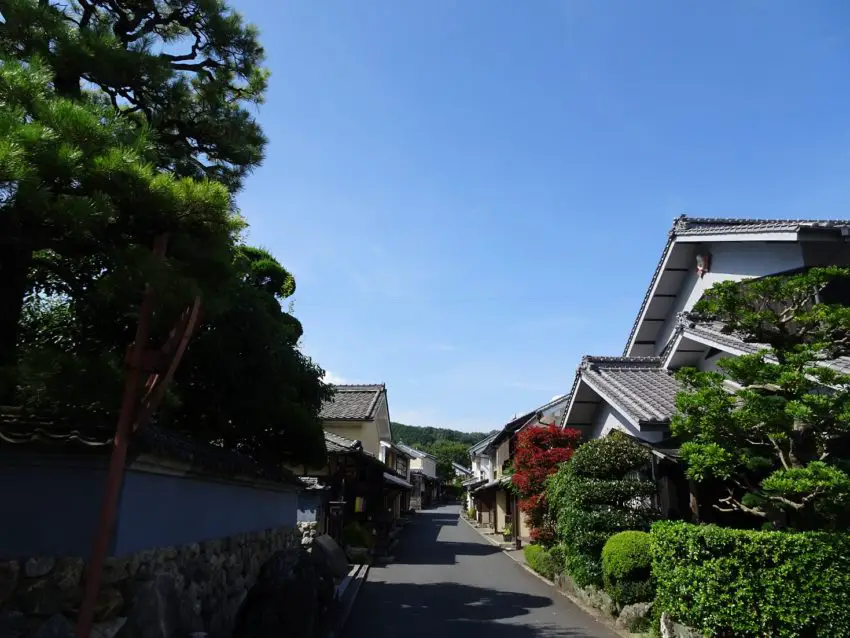The cute village of Uchiko in western Shikoku’s Ehime Prefecture is worth visiting for its well-preserved historical centre, which is filled with traditional wooden buildings dating mainly to the late Edo and early Meiji Eras (approx. early 18th to late 19th century).
Originally a centre for the production of silk and paper, Uchiko became wealthy in the 18th century due to the manufacturing of wax from the resin of the Japanese wax tree. Despite the subsequent decline of the industry, many of the former merchant houses have been preserved, as have several historic shops and an impressive kabuki theatre.
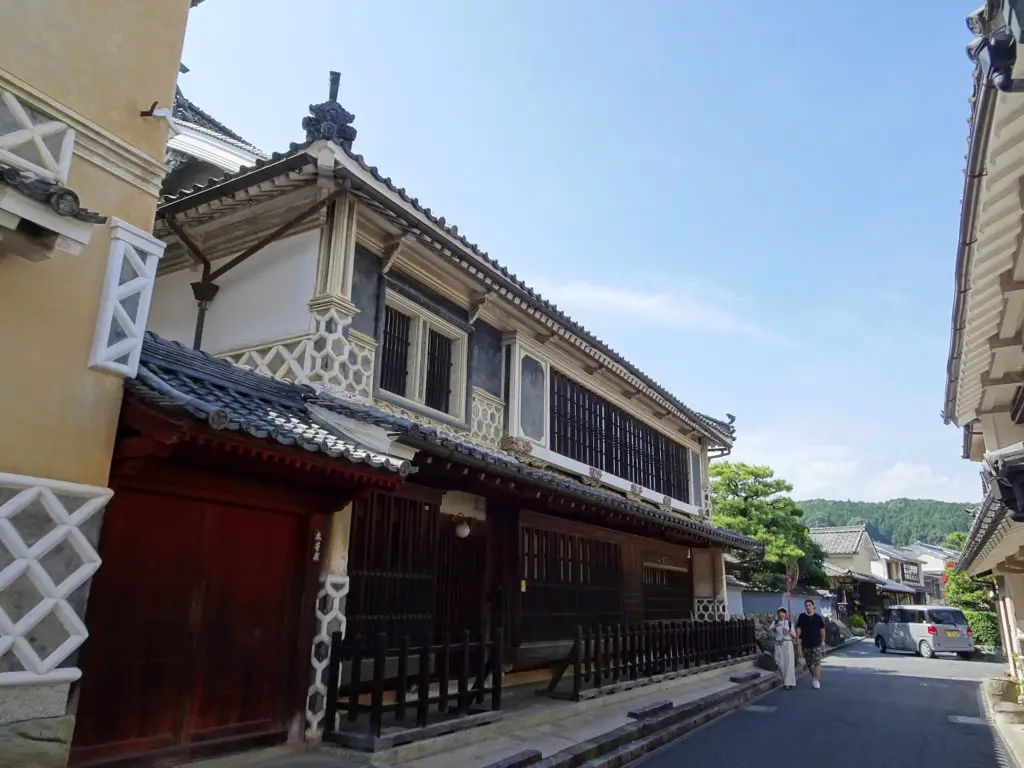
We love Japanese villages and found Uchiko to be a great place to spend a few hours exploring the tiny alleyways and getting a taste of rural Japan at the same time. Here’s everything you need to know about visiting Uchiko.
This post may contain affiliate links, and I might earn a small commission at no additional cost to you. For more info, click here.
What to See and Do in Uchiko
Excepting maybe the Kabuki Theatre, there is no real must-see sight in the village. The main reason to visit Uchiko is the possibility to walk around a beautifully preserved historical centre, where you can try and imagine yourself transported a couple of hundred years into the past.
Uchiko-za Kabuki Theatre
Surprisingly large for such a small village, the historical Kabuki Theatre is an effective reminder of the former wealth of the village. Together with the slightly older Kanamaru-za Theatre in Kotohira, it’s certainly the most impressive Kabuki Theatre we came across in Japan.
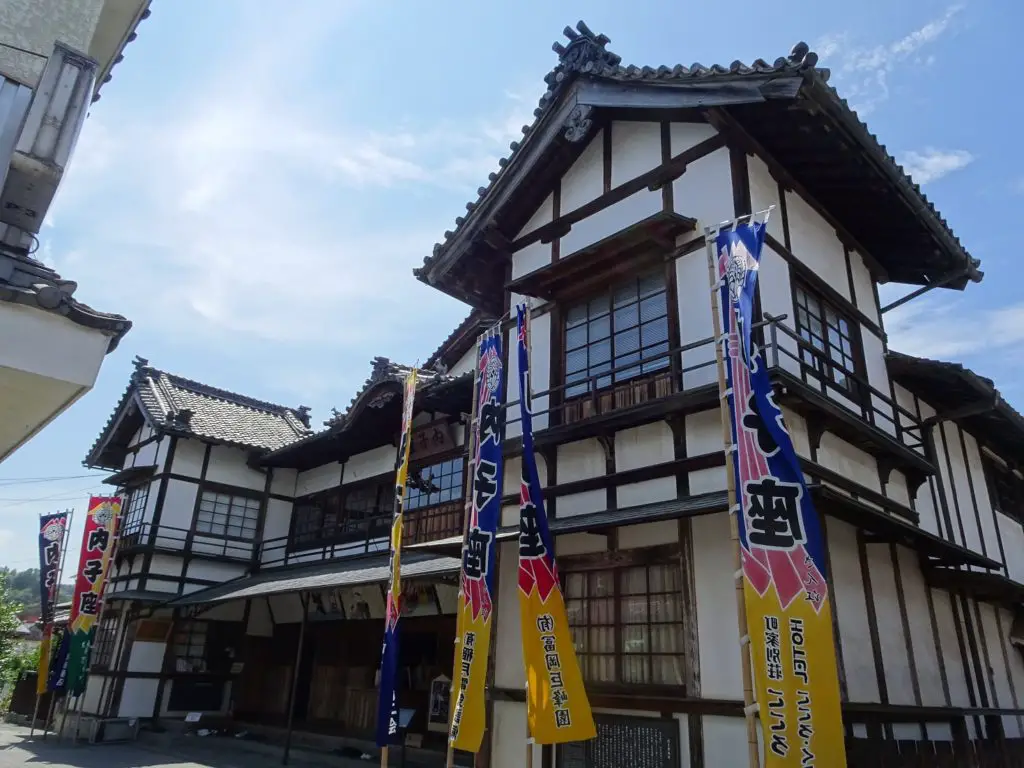
Built in 1916, Uchiko’s theatre was used for Kabuki performances, Bunraku (Puppet Shows), lectures and film screenings and still hosts performances today. Apart from viewing the pretty audience area and revolving stage, the best part is the possibility to take a peek behind the scenes and visit the actor’s dressing rooms and the ‘secret’ area underneath the stage.
The entrance fee is 400¥. The theatre lies on the way from the station to the historical centre. Take the third street left (to the north) after exiting the station, and then turn left into the first street after crossing the little canal.
Uchiko Yôkaichi District
Yôkaichi is the historical heart of the village, and consequently this is where you’ll find the highest concentration of traditional architecture. While a lot of the houses are still lived-in, many have been converted to shops, museums, tea-houses and cafés.
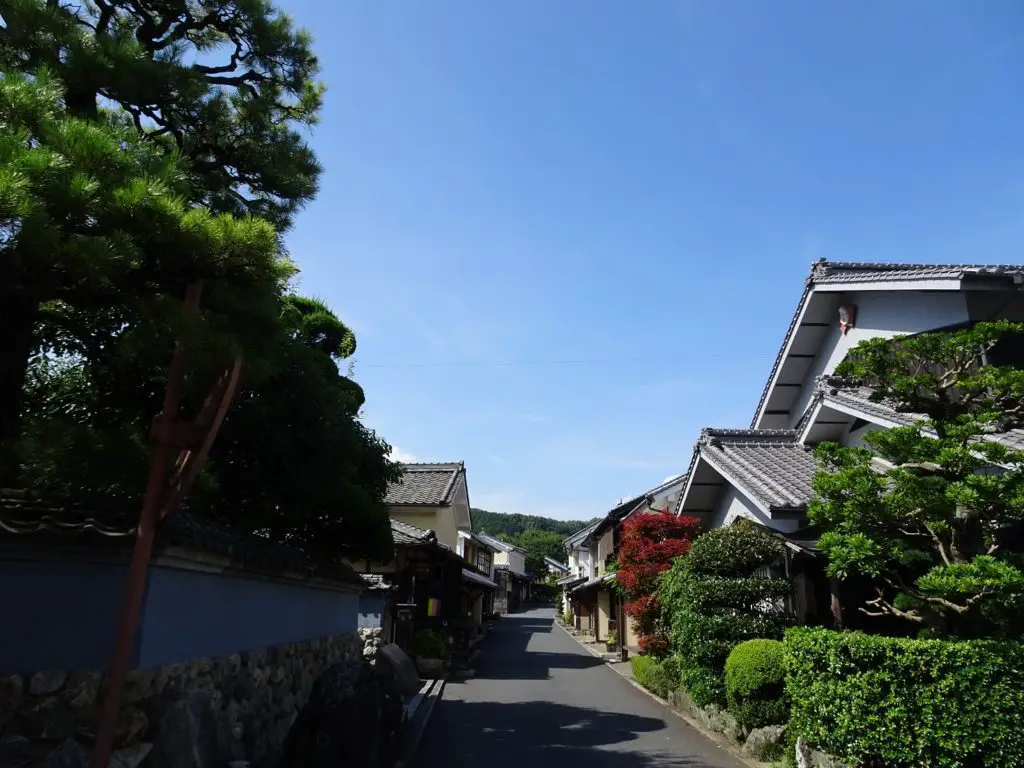
It’s a lot of fun to explore the area and peek into the houses (the ones you’re allowed to, that is:-). The majority of noteworthy buildings are located along the road running from north to south through the village. A map of the sights in the area is available at the train station in Uchiko or you can simply click here.
At the Omori Japanese Candle Shop, you can watch the process involved in making the candles. The people running it told us that it’s the last remaining Candle Shop in the village. Look for the paper lantern with a yellow candle in front of the building. Directly to the north, the small Machiya Museum is a recreated traditional town-house worth checking out.
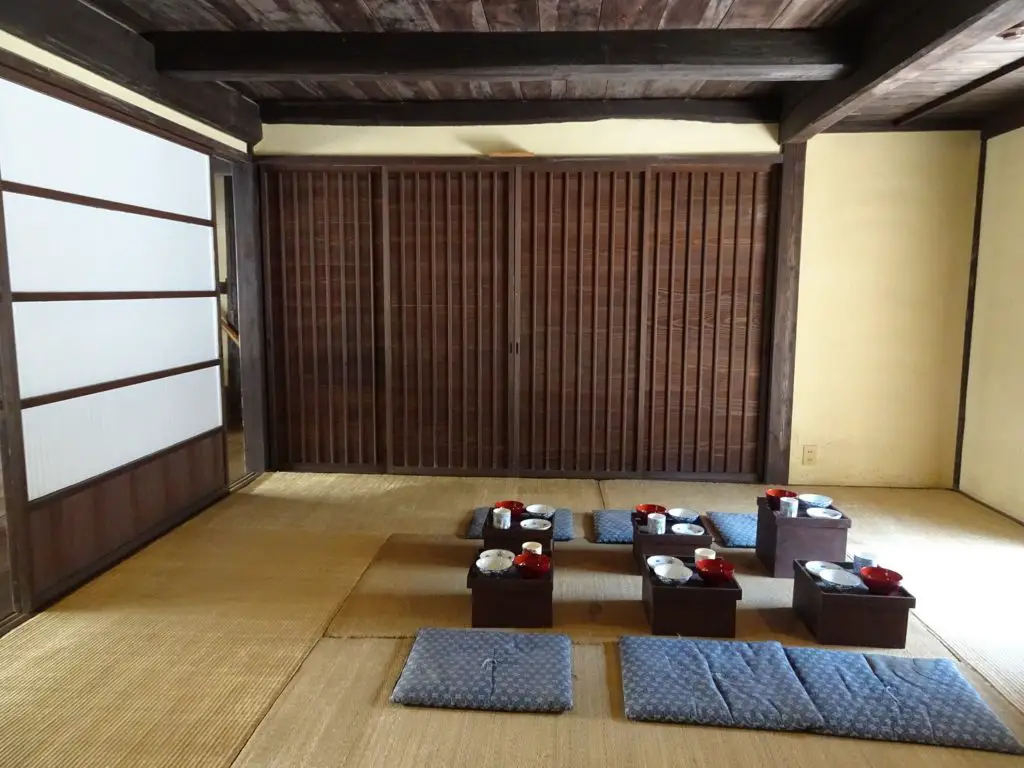
Other interesting buildings further north aren’t open to the public, but are just as impressive from the outside. These include the Omura Residence and the Honhaga Residence with its beautiful garden.
The Japanese Wax Museum is situated in the Kamihaga Residence, another former merchant’s house, and details the history of the village as well as the process involved in producing the wax. It was closed when we were there, but it seems worth checking out when open.
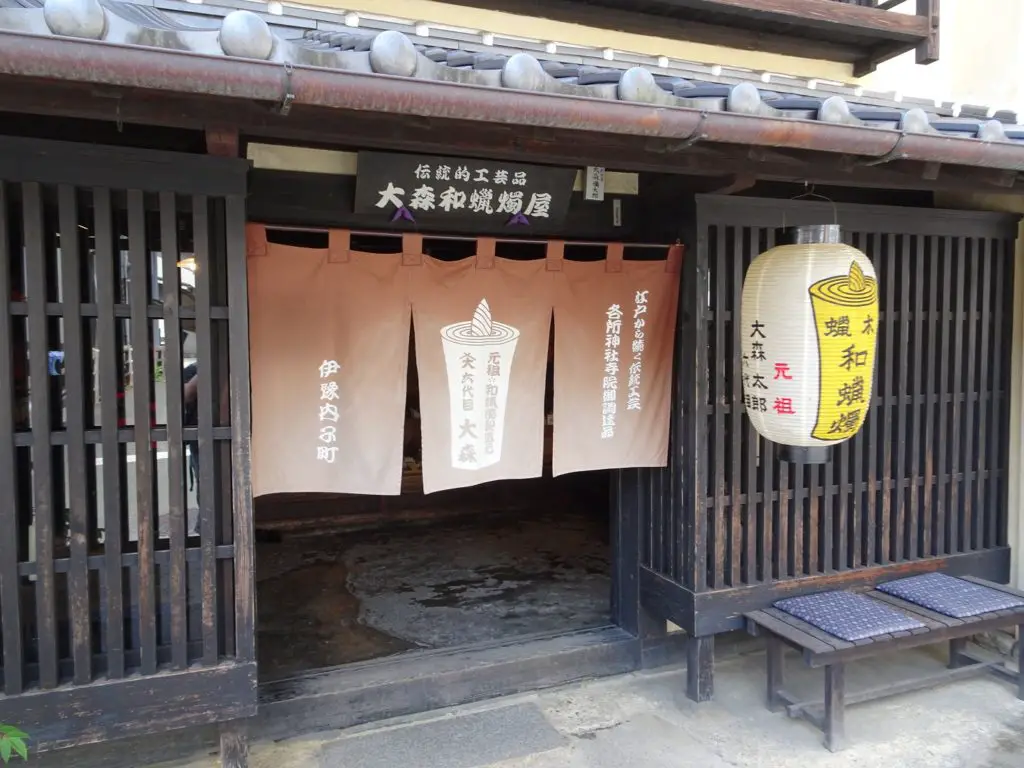
There are also a number of small shrines hidden in between the buildings, including a picturesque one with a number of red toriis leading up to it. Most of the sights are rather low-key, but the main reason to come here is the atmosphere, which Uchiko exudes in spades.
Practicalities
How to Get to Uchiko and Away
By far the best way to get around Japan is by using the country’s impeccable train system, which is fast, comfortable and efficient. A regional JR-Railway pass allows for unlimited use of Shikoku’s JR railways for 3 (9,000¥/68$), 4 (10,000¥/75$), 5 (11,000¥/82$) or 7 days (13,000¥/96$), which is a fantastic deal.
You can order your pass on this site.
Uchiko can be easily reached by JR train from nearby Matsuyama in the north (about 25 mins. / 750¥) or Ozu in the West (about 15 mins / 250¥).
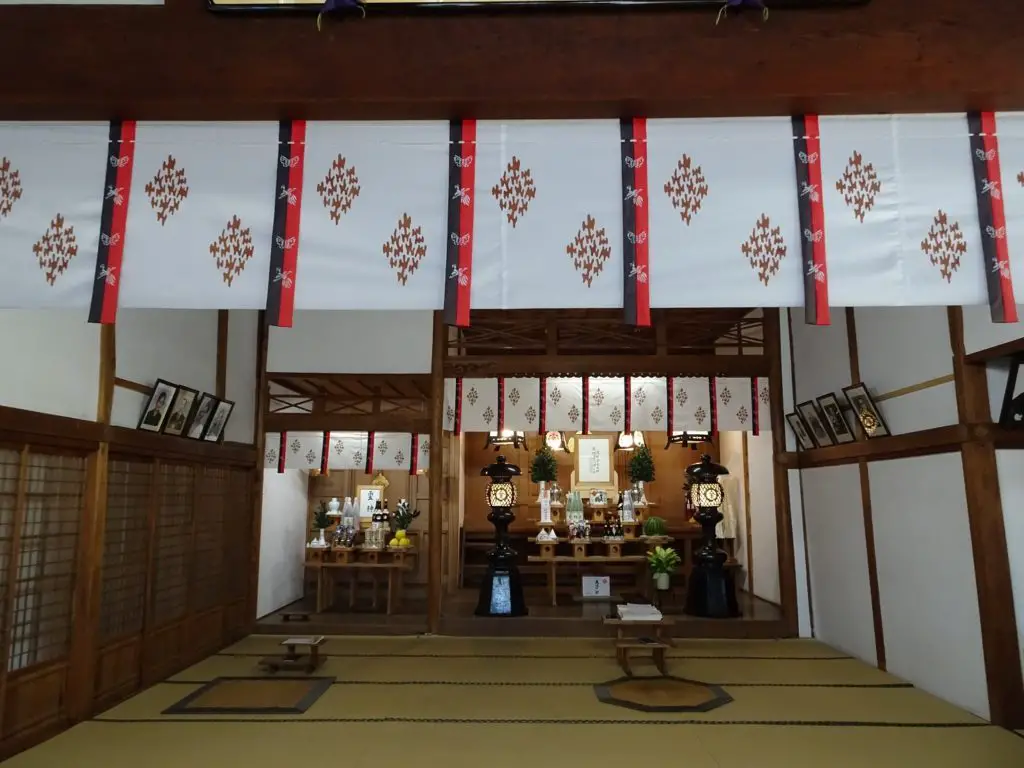
Getting Around in Uchiko
All areas of interest to visitors are close to each other, and the historical centre of the town is small enough to make walking the best way to get around Uchiko.
To get from the JR train station to the historic centre, you’ll have to exit the station to the east, take Honmachi-Dori, the third intersecting road to the left (north) and follow it for about 5 mins. into the historic Yôkaichi District.
There’s a map detailing the route available at the train station, or you can simply click here.
The Best Hotels in Uchiko
Due to its proximity to Matsuyama, most people (including us) just visit Uchiko on a day trip. Still, if you want to soak up the peaceful village atmosphere for a while longer, you might want to consider spending the night.
Hostel & Tatami Bar Uchikobare, where you can stay in the Dormitory, seems to be the only real budget option. If you’re not on a tight budget, there are a couple of traditional inns, which have been compiled on this website.
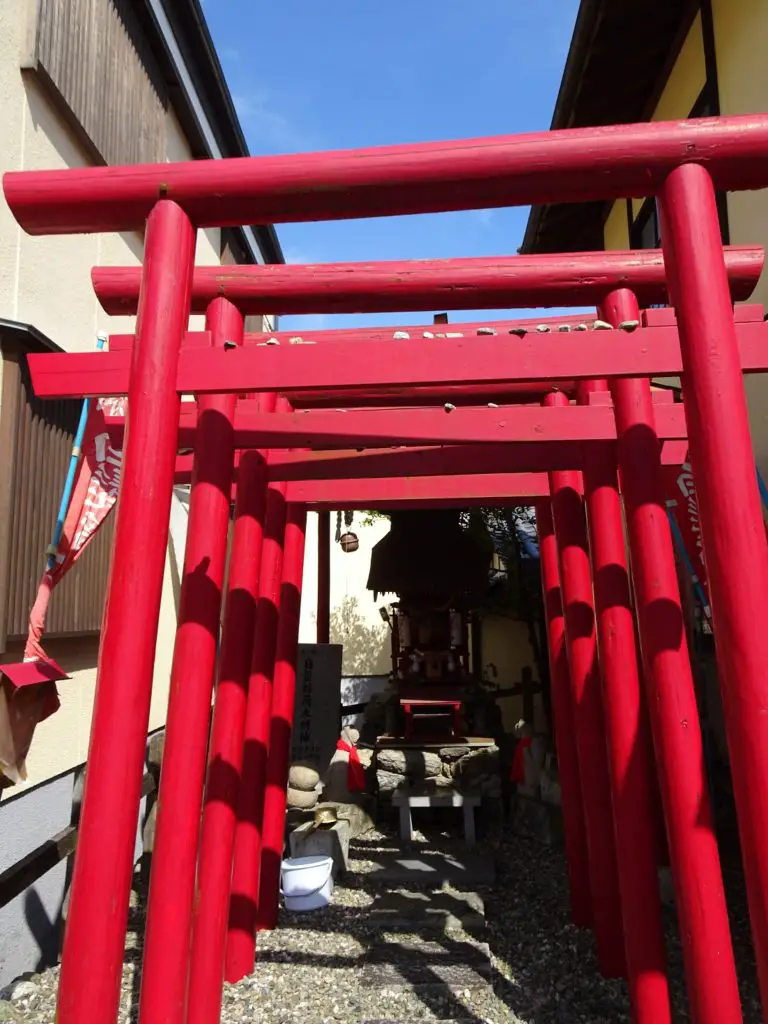
Where to Eat in Uchiko
Many of the merchant’s residences in the Yôkaichi Area have been converted to cute little café’s and teahouses, so there’s no scarcity of options for a drink or snack. There are also a couple of restaurants, mainly along Honmachi-Dori, the road leading to the train station.
Where to go next
Matsuyama, the biggest city on Shikoku and home to the bathhouse from ‘Spirited Away’
Kōchi, Shikoku’s most beautiful city (according to me:)
The Iya Valley – the best place to seriously get off the beaten track on Shikoku
